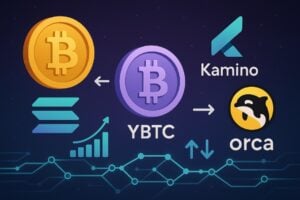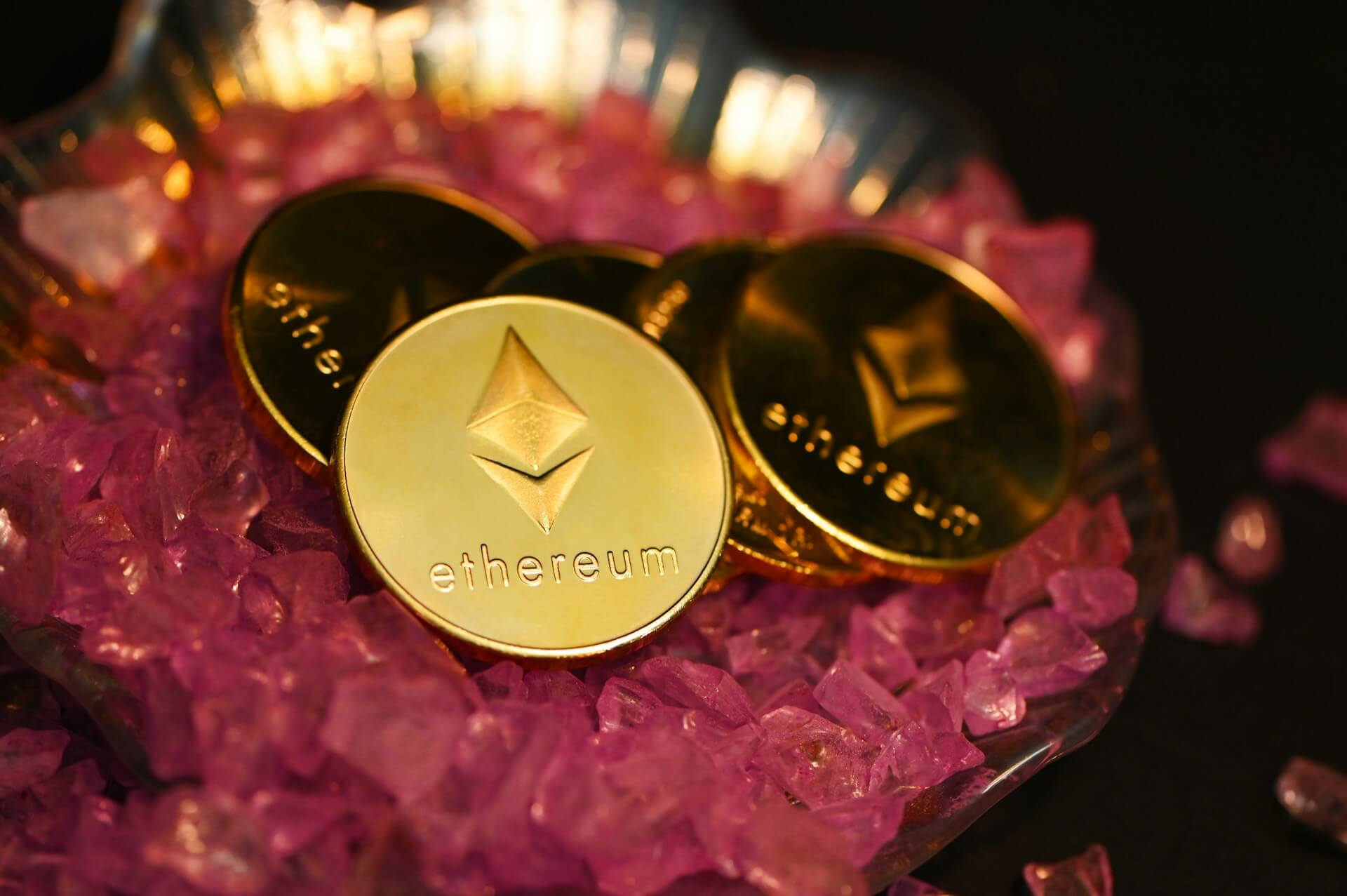Bitlayer introduces on Solana YBTC, a token pegged 1:1 to BTC and integrated with Kamino Finance and Orca, with the aim of offering BTC yields on Solana and low-latency trades directly in Solana’s DeFi ecosystem (official Bitlayer announcement).In this context, the combination of pegged asset and market infrastructure aims to unite speed and depth of …
BTC on Solana without custodians: Bitlayer’s 1:1 YBTC debuts with Kamino and Orca — yields and instant liquidity


Bitlayer introduces on Solana YBTC, a token pegged 1:1 to BTC and integrated with Kamino Finance and Orca, with the aim of offering BTC yields on Solana and low-latency trades directly in Solana’s DeFi ecosystem (official Bitlayer announcement).
In this context, the combination of pegged asset and market infrastructure aims to unite speed and depth of liquidity.
TL;DR
- What changes: exposure to BTC 1:1 with redemption in native BTC via Bitlayer bridge and access to yield vaults and concentrated liquidity on Solana.
- Data at launch: key metrics such as TVL, APY, and mint/redeem times/costs are not yet public (DeFiLlama – Bitlayer).
- Security: trust-minimized bridge based on BitVM (Yahoo Finance); typical risks of smart contract, bridge, and impermanent loss remain present.
- Incentives: program in mainnet beta with rewards in BTR (native token of Bitlayer) for minting and cross-chain use (details ongoing, CoinList).
According to on-chain monitoring and industry reports, Bitlayer launched its BitVM implementation on mainnet on July 16, 2025, and the token campaign on CoinList started on July 31, 2025 (Bitlayer blog, CoinList blog).
On-chain analysts following the ecosystem report that, as of August 19, 2025, the TVL and APY metrics for YBTC are not yet aggregated in public dashboards; it is advisable to monitor sources like DeFiLlama and Dune for real-time updates.
Why it is relevant: BTC yields on Solana and fast exchanges
The arrival of YBTC offers BTC users new possibilities for yield and liquidity in a fast execution environment with low costs. With Kamino, deposits in YBTC can adopt automated strategies with auto-compounding and risk management.
With Orca, YBTC pairs leverage the Concentrated Liquidity Market Maker for more efficient trades and, often, with lower slippage (Kamino docs, Orca docs). It should be noted that the initial market depth will make the difference.
How YBTC works: 1:1 peg and redeem in native BTC
Each YBTC is minted 1:1 against BTC locked on Bitlayer. The Bitlayer bridge uses a BitVM implementation to reduce reliance on centralized custodians and allow redemption in native BTC according to the protocol rules (Bitlayer docs, official Bitlayer site). An interesting aspect is the focus on on-chain verification and challenge.
Yield and liquidity: integrations with Kamino and Orca
- Vault Kamino — strategies with auto-compounding and range management to achieve returns denominated in BTC on Solana, with automated rebalancing.
- Pool Orca — liquidity provision on CLMM for YBTC
 main assets (SOL, USDC) exchanges with optimized slippage and greater capital efficiency.
main assets (SOL, USDC) exchanges with optimized slippage and greater capital efficiency. - Lending/borrowing — use of YBTC as collateral in compatible Solana DeFi protocols (support expanding as integration progresses).
Operational data and key metrics
- Initial TVL: not yet public; monitor DeFiLlama and specific on-chain dashboards for updates.
- APY of Kamino vaults: variable; initial values not yet released — the returns will include components of trading fees and incentives in BTR.
- Mint times: transactions on Solana in few seconds (quick finality); the transfer to/from native BTC depends on Bitcoin confirmations (typically slower, linked to Bitcoin’s block time).
- Costs: Solana network fees generally low; bridge fees and commission structure will be officially communicated by the team.
- Average slippage on Orca: depends on depth and range; aggregated data not available at launch.
- Cross-chain transactions since launch: not yet public; the first on-chain reports are expected in the weeks following the launch.
This section will be updated when official on-chain dashboards or reports are available.
The security model: BitVM bridge and residual risks
Bitlayer adopts a BitVM bridge with verifications and challenges to minimize trust in third parties (Yahoo Finance, Bitlayer official blog). It should be noted that, despite the trust-minimized approach, the following risks remain:
- Bridge and liveness: delays or operational suspensions can extend the redeem times.
- Smart contract: vulnerabilities in mint, vault, or pool contracts can impact funds. Check public audits and bug bounty programs.
- Oracle/prices: rapid movements can amplify risks for LP and leveraged positions.
- Impermanent loss: typical of liquidity provision, especially during phases of high BTC volatility.
Context and comparison: how YBTC is positioned
- WBTC (Ethereum): custodial model managed by centralized entities (WBTC).
- renBTC: project withdrawn in 2022 following the closure of Ren (Ren Project Medium).
- soBTC (Solana): centrally managed wrapper that lost its peg after the FTX crisis (Anchorage Digital).
YBTC aims to be a trust-minimized alternative for BTC liquidity on Solana; however, it will need to demonstrate scalability, redeem reliability, and market depth in practice. In this sense, the initial adoption will be a testing ground.
How to start: quick steps
- Wallet: Solana compatible wallet (Phantom, Solflare) with SOL for fees — see Phantom and Solflare.
- Mint: deposit BTC on Bitlayer and mint YBTC through the BitVM bridge (follow the official instructions on Bitlayer docs).
- Capital deployment: deposit YBTC in Kamino vaults or provide liquidity on Orca.
- Monitoring: follow APY, fees, health factor, and security updates through official dashboards and analytics tools like DeFiLlama and Dune.
Incentives, roadmap, and multi-chain
To support adoption in the mainnet beta phase, Bitlayer provides incentives in BTR for minting YBTC and cross-chain use. The bridge has already been extended (or announced) to Sui, Base, Starknet, Arbitrum, Sonic, Plume Network, and Sundial (Yahoo Finance). Further integrations are under evaluation, with priority given to ecosystems with high BTC liquidity demand.
Risks and Points of Attention
- Redemption: the transition from Solana to native BTC requires confirmations on the Bitcoin network and may be subject to operational delays.
- Initial liquidity: potentially wider spreads; assess the depth of the pools before exposing significant capital.
- Temporary incentives: APY supported by rewards may decrease at the end of promotional campaigns.
- Protocol compatibility: check that the lending protocols accept YBTC as collateral and the related risk parameters.
FAQ
Is YBTC on Solana the same as native Bitcoin?
No. YBTC is a 1:1 representation of BTC locked on Bitlayer. It is redeemable in native BTC through the bridge, according to the operational rules of the protocol.
Is it a custodial model?
The design of the BitVM bridge is trust-minimized, designed to reduce the need for centralized custodians. Technical risks from smart contracts and bridges remain.
How much do mint and redeem cost?
The costs on Solana are generally low; bridge fees and redeem times to native BTC will be made public at launch and communicated through Bitlayer’s official channels.
Can I use YBTC as collateral?
Yes, provided that the lending/borrowing protocols on Solana support it. Check policies and risk parameters in the respective documentation.
Which platforms support cross-chain transfers?
At the moment Bitlayer, Kamino, and Orca on Solana; Bitlayer is extending the bridge to Sui, Base, Starknet, Arbitrum, Sonic, and other networks.
Takeaway
- BTC 1:1 on Solana: YBTC enables yield and fast liquidity in a smart contract environment.
- Security: trust-minimized bridge, but with typical DeFi and cross-chain risks to evaluate.
- Metrics to follow: TVL, APY, and pool depth will determine adoption beyond the initial incentives; refer to on-chain dashboards and official reports for data updated as of August 19, 2025.
Finley Benson is a tech-savvy writer with a background in blockchain development, Finley explores the latest innovations in Web3, DeFi, and smart contract technologies. His articles blend technical depth with real-world applications.


 main assets (SOL, USDC) exchanges with optimized slippage and greater capital efficiency.
main assets (SOL, USDC) exchanges with optimized slippage and greater capital efficiency.







